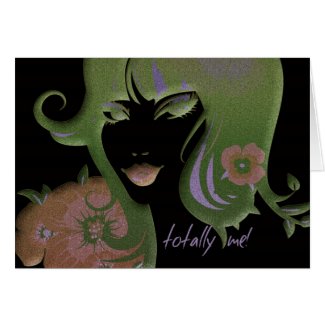Saturday, May 8, 2010
Friday, May 7, 2010
Wednesday, May 5, 2010
Tuesday, May 4, 2010
What is your top source of inspiration in photography?
Accomplishments of Mankind
I’m always amazed at the things we (humans) are capable of. I think people forget how far we’ve come in the last 1000, 100, 10, and even 1 year. Our lives are filled with stuff that was invented and built by other humans. Skyscrapers, bridges, machinery, vehicles, entire cities, and our cameras — all completely unnatural, yet so normal to us. I find this artificial world to be so fascinating, and it inspires me to capture it in my images. The things we know today will disappear and change before the end of tomorrow. I look back at images of our creations from the past, and it helps to give me a better appreciation for what we have today. I hope that some of my images will do the same 50 years from now.
Beauty of Nature
The accomplishments of man are amazing, but nature’s beauty is unmatched. There’s something so pure and innocent about it. Nobody invented it, thought it up, or built it — it just is, it always has been, and it always will be. Sure, things change over time, but that doesn’t make it any less natural. I don’t know what it is about pure untouched nature, but it catches our eye. Beautiful scenes and landscapes are out there waiting to be discovered — and if a photographer is there, waiting to be photographed. You can’t take nature’s beauty back with you to your home, but a good photograph is a close second. Capturing nature in a photo is one thing, but capturing the beauty of nature in a photograph is entirely different.
Other Photographers
I’m a learner — always have been, always will be. If I’m not formally learning in a school system, I’m picking up things from people with a common interest. Photographers inspire me to try harder, try new things, and see things differently. I look though portfolios and galleries, making mental notes of the elements, compositions, post-processing, styles, and subjects that I like. I try to take those things and incorporate them into my own work — not for the sake of copying, but for growth and learning on my part. I also read a lot of articles and blogs about photography. I find these things to be a great source of inspiration when I come across a thought or technique that’s new to me. I usually can’t wait to get out and experiment with these new things. I can only hope that what knowledge I have can be passed on to other photographers through my photography and my writing.
Challenge
I’m so extremely competitive when it comes to the things I’m passionate about — I’ve always been that way. I take challenges and competitions as personal goals in order to better myself in some way. Photography contests are one way I challenge myself. I put my work up against the work of other photographers, in hopes that other people will enjoy my photography. I do it for myself, and by that I mean that I don’t compete using photos that I think other people will like — I use the photos I like. Another way I get inspiration through challenge is to set goals or restrictions on myself in such a way that I’ll have to get unconventional. I might go out for a shoot with just one lens on the camera, forcing myself to find new compositions that I might have otherwise overlooked. I might restrict myself to photograph things or scenes that contain one specific color or shape. In Photoshop, I may force myself to use one specific editing technique, then try to make something of it. Whenever I challenge myself, the end results aren’t always the best, but I usually learn something worth hanging on to for future use.
Monday, May 3, 2010
Constructive Criticism: How To Guide
The goal in constructive criticism is to critique an individual so they will benefit or improve.
How do we give constructive criticism without "patting them on the back" for subpar work or give unconstructive and pointless critiques that the person does not take it seriously?
Here are some pointers to constructive criticism.
1. Constructive criticism has to be genuine. A person giving this criticism has to genuinely feel it is important to give it.
2. The person receiving the criticism must have some level of understanding of your role, and understand that you truly want them to improve.
3. Do not use statements like, “I want you to…”, “You must understand…”, “You must see the difference…”, “I need you to…”. You are immediately setting the stage for the individual to become defensive, especially if there is already a bad history of communication.
4. Take a team approach. In other words, sentences like, “Let us look at the following…”, “We can fix this by...” By doing this, you have created a collegiate type atmosphere. Both individuals are on the same level. Now you can set the stage to critique, not criticize, and then begin to construct a foundation for improvement.
Constructive criticism takes time and practice. If we want others to accept constructive criticism immediately, that will not happen. Constructive criticism presented in a positive way, as well as open communication, takes practice. Constructive criticism must be used effectively if the receiver is to improve.
A good "template" to a constructive critique.
1. Start off the critique with a postive note about the artwork such as "This is a good start" or "This is nice piece". In all retrospect there is no such thing as bad art, since it is all relative.
2. Give the negative points of the artwork. This should still be done in a postive way. Avoid such words as "bad, horrible, ugly, I don't like, etc". Try using words that pull you into the work such as "This area needs..." or "I believe that this area...". These need to be honest but still nice toward the artist.
3. Give points on how to improve the negative areas you just pointed out. This is very key, if you say an area needs work and leave it at that, the artist will not know how to improve it. We can't read minds so we need to know what it is you are thinking. If all possible give examples bring yourself into their field.
4. Give positive points of the artwork. This is the time to build the artist up. By telling them the things that you like, this will help them realize what areas they are strong in. The negative shows them what areas they are weak in... see the pattern? You need to examine the picture, if you can't find a positive aspect then I suggest to look further or not give a critique.
5. Finally end with a strong postive note. "This is good." "Keep up the good work", "You're coming along nicely" etc.
By thinking about these aspects you can help and artist improve. And build moral after all is said and done.





